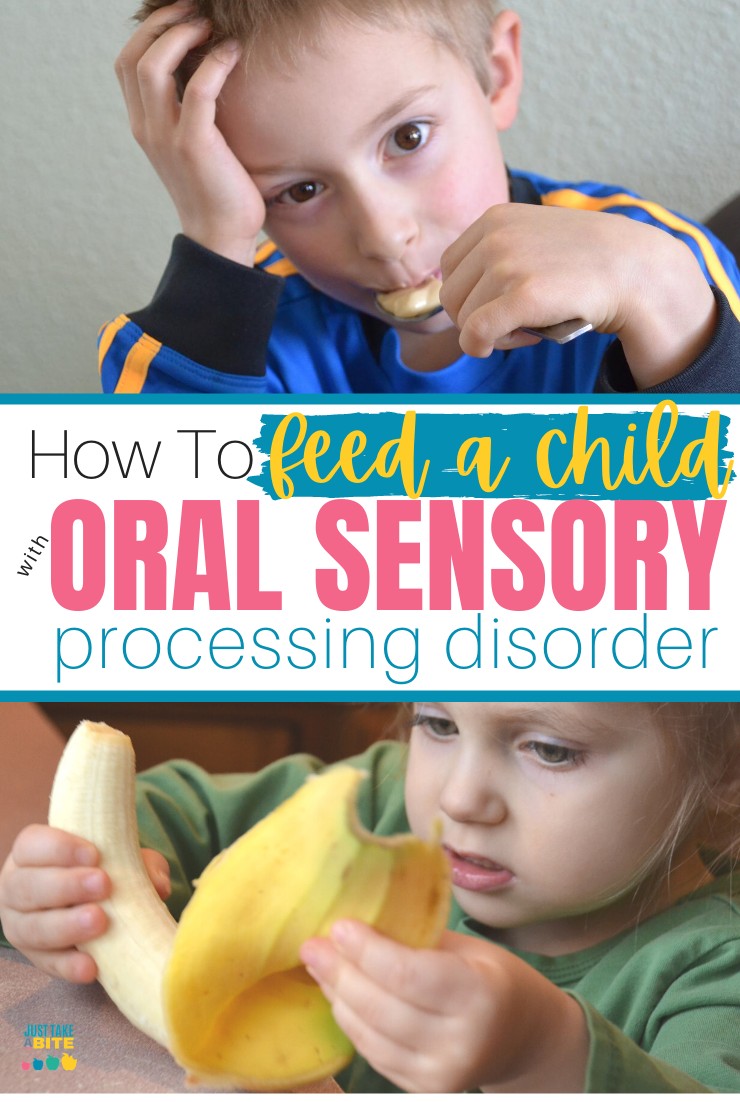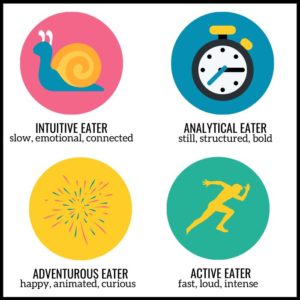Are meal times a battle? Is your child’s diet limited due to flavors and textures? Is chewing a chore? Would a delicious treat like leftover muffin bread pudding be out of the question because it’s “too mushy?” Take heart! I’ve got the best strategies for feeding a child with oral sensory issues.
I have two kids with oral sensory issues. But I didn’t even know it until I wrote this post! To clarify, we’ve been working on my daughter’s sensory issues since she was a baby. But I didn’t realize some of my son’s behavior was related to sensory issues until I did more research.
Why is that? They are at the opposite ends of the spectrum. Some kids with oral sensory issues fear stimulation. It is the most obvious with refusal to chew, eat, etc. That is my oldest. I still remember being so excited to feed her solid food when she was six months old. Such a milestone with your first child! But it did not go as well as I had hoped. Everything came right back out. Little did I know we’d be battling that problem ten years later!
Some kids crave stimulation, like my son. He eats pretty well…but he always stuffs as much food in his mouth as possible and is constantly chewing on things (non-food items like clothes, toys and his hands). He seeks out oral stimulation. Maybe that’s why he loved nursing so much! Though he really had no interest in solid food until about ten months old.
What is Oral Sensory Processing Disorder?
As you can see there is such a difference just between two kids in the same family. So you can imagine that the spectrum of oral sensory issues is quite broad. Here are some of the common symptoms.
The child…
- won’t use utensils/eats with his hands
- won’t stay in a chair during a meal
- puts more food in his mouth than fits
- chews with her mouth open
- chews with her front teeth
- chews on toys and clothes
- holds food in her mouth for a long period of time
- will only eat certain textures, sizes, shapes or colors of food
- gags on food easily
- refuses to try new foods
- is afraid of eating
- pushes food forward with his tongue instead of back
As if getting kids to eat a nourishing diet wasn’t hard enough. When you add Oral Sensory Processing Disorder it just compounds the problem. But take heart. It can be done! It just takes some work figuring out how best to meet your child’s needs.
I have a collection of strategies for feeding kids with all sorts of challenges. Some are simple tricks to try at home. Some require help from therapists and doctors. Start with one and keep working through the list to figure out what works best for you. I’ll share our own successful strategies as well.
Also keep in mind that every child has a unique Eating Style that dictates how they eat. What seems like a sensory issue could in fact just be how they express themselves through eating. Learn more about your child’s Eating Style HERE!

At-home Tools for Feeding a Child with Oral Sensory Processing Disorder
- Try different textures.
It goes without saying that food texture is a huge obstacle with sensory issues. Mushy, chewy, crunchy, crispy liquid, solid. I’m sure your child has a multitude of categories. Figure out what textures your child is comfortable with and serve those foods first. Gradually try introducing new textures. Just one bite at a time is sufficient. Go at your child’s pace. You don’t want to make eating stressful or scary. Over time you can try larger quantities. If your child is a fan of smoothies I’ve got tons of healthy ones in my book Easy Nourishment for Picky Eaters. - Let kids play with food.
One of the best ways to get a child with oral sensory issues comfortable with a particular food is to let them play with it. Create a lunch with various dips, spreads and crackers. Make a snack of fruits and veggies and let them make a picture out of it. Don’t put any pressure on the child to eat it. Just let them have fun creating things.
- Teach kids to cook.
This is one of my favorite strategies. Not only does teaching your child to cook often get them to try new foods, it also sets them up for success as an adult. They’ll get feeding therapy and life skills all in one! We’ve been using the Kids Cook Real Food ecourse for over two years now. It has been amazing to watch my kids build confidence with their skills and be willing to try so many foods! It’s a win-win. - Make meals fun.
It never hurts to cater to a child’s playful nature. Try fun straws for drinking smoothies and pureed soups. Cut sandwiches into shapes. Use an assortment of cups with different shapes and textures. Or maybe get a new cup or straw as a prize for trying something new. Relate a meal to a story you just read (i.e. porridge from Goldilocks). Anything to associate eating with fun. - Exercise the mouth.
For some kids the physical act of eating is truly hard. Exercises can help train their muscles. Kind of like lifting weights for your mouth. Have them practice sucking from a straw, blowing bubbles, making sounds, chewing chewy and crunchy food. Anything that gets their mouth moving in different ways. - Use different utensils.
It drives my husband and I crazy that our two oldest rarely use utensils unless we tell them (force them!) to. I never really thought about how the utensils feel to them. Or that they could be challenging to manipulate (especially since our three-year old uses them so well!). If this is the case for your kids experiment with spoons and forks of different materials, sizes and shapes. Find something your child is comfortable putting in his mouth. - Experience food away from meals.
Kids learn that they are expected to eat at meal times. Which creates pressure and sometimes anxiety. Offer your child exposure to food away from a meal time, without expectations. Give her a plate of fruits and veggies to snack on as she pleases. Let her play with them. Make sure she knows she can eat the food if she wants or leave it all there. It’s up to her. This will help her relax and build confidence. - Use body movement before eating.
Another struggle for my kids is sitting in a chair to eat. Some kids just need to move to satisfy their need for stimulation. Body movement before a meal can help this. Before coming to the table have them try some jumping, rocking, hanging or climbing. Other forms of touch that might help are hugs and being wrapped in a blanket. Ease their senses first. Then start the meal. Or let them stand or sit on a balance ball to eat. - Use chew toys.
It may sound strange, but some kids just need to chew! They need constant oral stimulation. They can’t eat non-stop (though sometimes it seems they try to!). Candy and gum are not healthy options. A simple solution is a chew toy. There are special ones designed for older kids/kids with oral sensory issues. I’m tempted to get one for my son so he’ll stop putting his hands and toys in his mouth. For a long time I thought maybe he was cutting molars. But after a few years of the behavior I know he just needs oral stimulation.
- Experiment with flavors.
Generally kids with oral sensory issues need very bland and mild-flavored food. But that isn’t always the case. Some kids like a lot of spice. Talk to your child and experiment with different flavors. Salty, sweet, spicy, bitter, bold, mild. My oldest can’t handle any spice. But she loves tons of salt. My son, on the other hand, enjoys spicy food. Again, that difference between sensory avoidance and sensory stimulation is obvious. - Improve gut health.
Oral sensory issues are related to the nervous system, which is controlled by the brain. A nervous system dysfunction often points to leaky gut, where foreign invaders (such as food particles and toxins) leak through the intestines and cause an immune response. They also impact proper function of the brain. The solution is to work on gut health. This can include daily probiotics, digestive support like enzymes and sometimes a specific diet (remove allergens, elimination diet, rotation diet, etc.). - Stick to a schedule.
Kids with sensory issues like routine. They want to know what to expect. They fear unknowns. Sticking to a regular eating schedule can be calming. They know when food is coming and when they are expected to eat. It is important to keep up the routine even on weekends, vacations, etc.
 Testing and Therapy for Oral Sensory Processing Disorder
Testing and Therapy for Oral Sensory Processing Disorder
- Orthodontic work to correct the palate.
Oral sensory issues often coincide with structural problems with the mouth. Orthodontic work to expand the palate can help make the physical process of chewing and swallowing easier. It will also help with proper breathing. While traditional orthodontics may help, we found that Orthotropics was much more effective. You can read our story here. - Speech and occupational therapy.
Sometimes oral sensory issues point to a lack of proper reflex integration. All reflexes of the body should integrate during infancy if the child is developing properly. But it doesn’t always happen. My oldest still has her tongue thrust reflex, meaning she pushes food forward with her tongue instead of back to the throat for swallowing. Both speech and occupational therapy can help get all of the reflexes integrated properly and train the mouth to chew well. - Craniosacral therapy, chiropractic care and functional neurology.
All of these therapies focus on the whole body structure and how things work together. Tension in the neck and spine can cause the tongue to feel restricted, making chewing difficult. Getting the whole body in alignment and loosened will let your child relax and have an easier time eating. We have used all three of these therapies to help with breastfeeding issues and sensory problems in older kids.
- Vitamin and mineral deficiencies and imbalances.
Nourishing food is a must when dealing with oral sensory issues. The root problem can be a vitamin and mineral deficiency and/or imbalance. It can also be related to heavy metals. Hair tissue mineral analysis is the best way to find out where your child is lacking and develop a plan for supplementation and dietary changes. Some simple supplements to start with are probiotics and digestive enzymes. These are beneficial to all children. - Tongue and lip ties.
Revising a tongue and/or lip tie can give a child more ability to chew and swallow properly. It will also improve speech and overall oral structure. Find a preferred provider (that treats with laser) to do the evaluation. A tongue tie may not be obvious to you.
Oral Sensory Feeding Problems
If your child is struggling with eating due to oral sensory issues there is a lot you can do to help! Try a few of the at-home strategies. And don’t be afraid to seek help from professionals. It can be life-changing for both you and your child.
Looking to dig even deeper into your child’s feeding struggles? I’ve got more tips and strategies in my book Why Won’t My Child Eat?!. Grab your copy here!
It’s always helpful to figure out your child’s Eating Style to meet their unique needs.
You can also assess your child’s mouth function with my Mouth Function Assesment Guide HERE.
Would you prefer 1:1 support? See if Nutritional Therapy + HTMA is right for you!
Have you tried any of these strategies for oral sensory feeding issues? Do you use others?
I’d love to hear what works for you!





